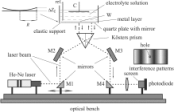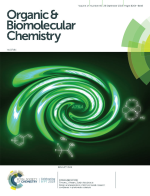
Interface Stress Measurements in an Electrochemical Environment
The book chapter authored by
G.G. Láng
is published in K. Wandelt (ed): Encyclopedia of Interfacial Chemistry, 2018, pp. 195–206.
Abstract:
The intensive parameter conjugate to surface area (often called the “surface stress,” “surface tension,” “interfacial tension,” “interface stress,” or “specific surface energy”) is an important parameter in the thermodynamic theory of solid electrodes because any interaction between the bulk solid and the remainder of the system takes place via the interface region. The thermodynamic properties of this region (i.e., the electronic conductor | ionic conductor interface, for instance the interface between a metal and an electrolyte solution) directly influence the electrochemical processes, an understanding of the thermodynamics of interfaces is of importance to all surface scientists and electrochemists. Unfortunately, a study of the interface stress of a “solid electrode” (i.e., an electrode that contains an electronically conducting solid phase in contact with an ionically conducting liquid phase) is complicated by many factors, and with the exception of a few special situations the absolute interfacial tension at the solid | liquid interface is inaccessible by experimental methods. Nevertheless, during the past two centuries several attempts have been made to derive thermodynamic equations for the solid | liquid interface, and several methods were suggested (and were supposed to be suitable) for the determination of changes in the interface stress of solid electrodes. In the present study some of the methods developed for the experimental determination of (interfacial or film) stress changes in electrochemical systems containing solid–liquid interfaces are briefly reviewed, as well as the kind and quality of information that can be obtained using these methods are discussed. The “bending beam” (“bending cantilever,” “laser beam deflection,” “wafer curvature”) method and related techniques, the piezoelectric method, the extensometer method, and the method based on the measurement of contact angle are discussed in detail. Special attention has been paid to problems related to the use of optical methods for position sensing.
